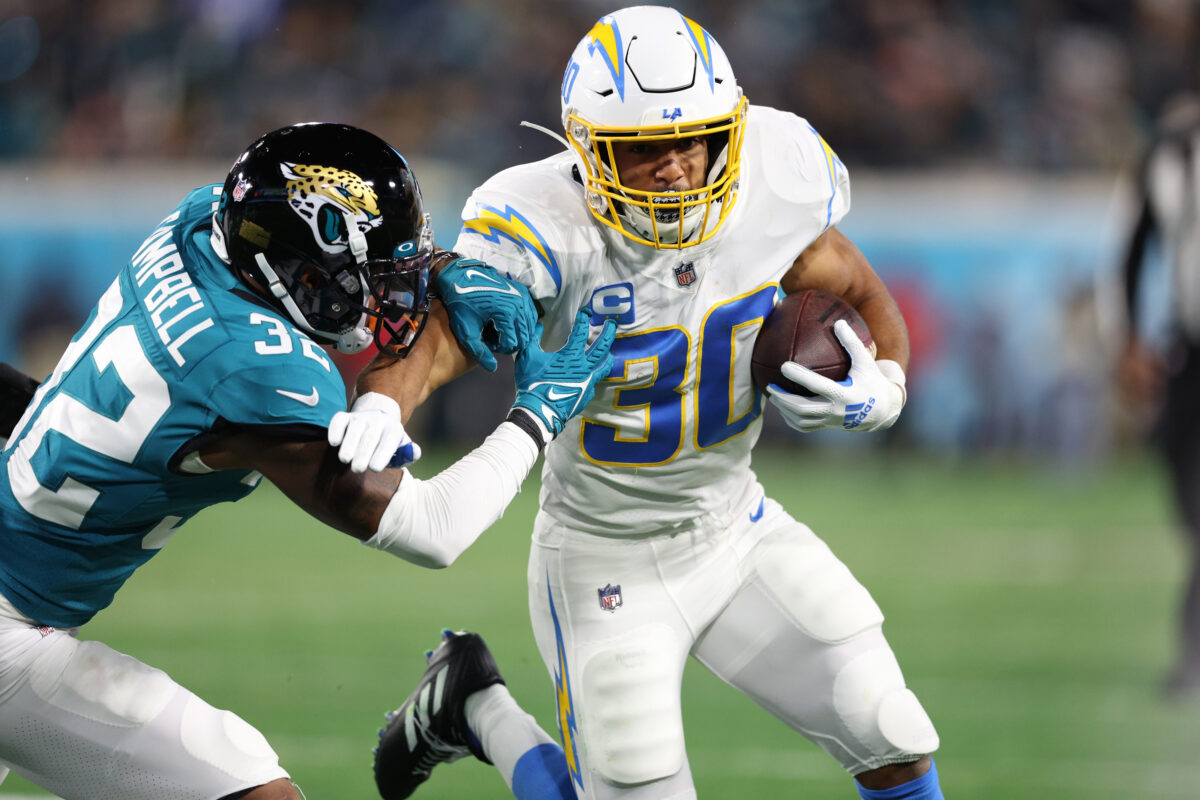Between four players earning at least 295 carries in 2022 and two tailbacks selected among the first dozen picks in the 2023 NFL Draft, it looked like running backs were trending back toward a solo starring role in backfields across the league. Despite a crowded class of veteran and rookie talent, the landscape suggested the days of a low-cost platoon were … well, not even close to over, but no longer the dominant trend it had been the past decade.
Then Austin Ekeler’s contract standoff was decided at the price of less than $2 million in incentives.
So it turns out we’re not there yet.
Ekeler asked for a trade this offseason in the face of the final season of a bargain four-year, $24.5 million contract with the Los Angeles Chargers and no extension on the horizon. It wasn’t an unreasonable request. He’d only missed seven games the previous four seasons, generating 5,678 yards from scrimmage (seventh-best in the NFL), catching 323 passes (55 more than second-place Alvin Kamara) and scoring 52 touchdowns (second only to Derrick Henry).
For all that production, he was the league’s 13th-highest paid running back in 2022. If he earns all $1.75 million in incentives in 2023, he’ll finish the year as the league’s 11th-highest paid back. At a possible $8 million, he’d spend this upcoming season as the league’s 257th-highest paid player, matching the average salaries of Charles Omenihu and Will Dissly.
It’s a rough scene, but it makes sense. Ekeler is still going strong but also just turned 28 years old. That’s a few months younger than Leonard Fournette, who the Tampa Bay Buccaneers recently decided they no longer wanted at an average salary of $7 million. Over the last four seasons only four players have rushed for 1,000 yards or more in a season at age 28 or older. Only nine have had more than 1,000 total yards from scrimmage.
This explains why the Chargers weren’t willing to craft a contract extension around Ekeler’s past performance. It’s also evidence behind why potential trade partners were unwilling to meet whatever asking price LA put forth, particularly if they had no interest in offering the dynamic back a contract extension. Parts of the league may be turning back to an RB1 dynamic, but the pay scale isn’t going to change in turn.
Ekeler isn’t a traditional workhorse back, which makes his situation even more interesting. Per Over The Capp, he was just one of only 11 running backs to play at least 60 percent of his team’s offensive snaps in 2022 and one of four to hit that number in 2021 but his 410 rushing attempts rank 13th. If anything, his value as a receiver should have helped inflate his value beyond the NFL’s running back scale.
Instead, he got middle-of-the-road cash despite top of the line production. That’s not new. Le’Veon Bell overshot his reach when he wanted to be paid like a top runner and a No. 2 wide receiver, but even after sitting out a year with the Pittsburgh Steelers he settled for third place among running back contracts (albeit at $13 million annually, which is still double Ekeler’s average Chargers salary).
So what have we learned from this? Well, that Ekeler was in bad shape no matter what and $1.75 million in bonus cash, assuming he plays up to his typical standard, was the best he could do. His next contract won’t be the substantial raise for which he’d hoped, even if he’s a tremendous value as a receiver, because recent history does not shine on 29-year-old running backs.
We’ll see if it translates to more run-heavy backs like Saquon Barkley and Josh Jacobs as they play out the franchise tag this fall. What looked like a potential swell for running back contract value has instead turned out to be a shallow tide. It’s possible that changes, but if a reliable player like Ekeler — tailor-made for NFL passing offenses — can’t turn his production into more than $1.75 million in incentives, it’s gonna be a tough scene out there for his veteran colleagues.
